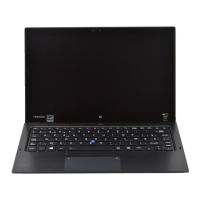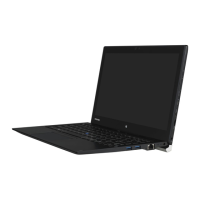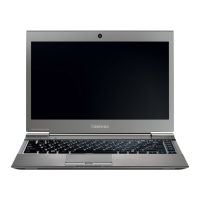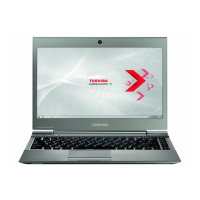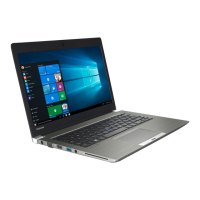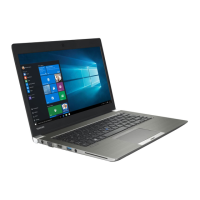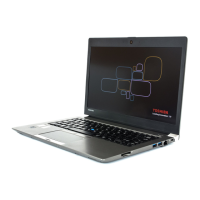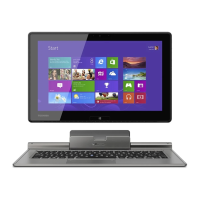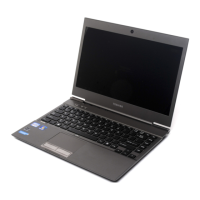
Do you have a question about the Toshiba PORTEGE Z20t-B Series and is the answer not in the manual?
| RAM | 8GB LPDDR3 |
|---|---|
| Graphics | Intel HD Graphics 5300 |
| Bluetooth | Bluetooth 4.0 |
| Display | 12.5-inch Full HD (1920 x 1080) IPS touchscreen |
| Storage | 256GB SSD |
| Operating System | Windows 8.1 Pro |
| Wireless | Intel Dual Band Wireless-AC 7265 |
| Ports (Tablet) | Micro HDMI, Micro USB, MicroSD slot, Headphone/Microphone combo jack |
| Ports (Keyboard Dock) | 2 x USB 3.0, HDMI |
| Camera | 5MP rear, 2MP front |
| Security | TPM, fingerprint reader |
Details legal notices, disclaimers, and trademark information for TOSHIBA computers.
Provides information on regulatory compliance and standards applicable to the computer.
Contains FCC notices, conditions, and contact information for compliance.
Explains CE marking, compliance with European directives, and working environment guidelines.
Information on proper product disposal according to EU regulations.
Lists essential hardware and documentation included with the computer for setup.
Describes the TOSHIBA Keyboard Dock and its availability for different models.
Provides basic information and steps for setting up and starting the computer.
Explains the procedures for shutting down, restarting, and managing power states.
Identifies essential components of the tablet computer with illustrations.
Details the front, left, and right side views of the TOSHIBA Keyboard Dock.
Describes internal hardware like battery pack, CPU, and internal storage.
Instructions for operating the computer in tablet mode, including screen orientation.
Explains touch screen gestures like tap, pinch, and swipe for interaction.
Details keyboard layout, special keys, function keys, and indicators.
Covers battery usage, charging, capacity monitoring, and extending battery life.
Overview of pre-installed utilities and applications for computer configuration and use.
How to set, change, or delete user and supervisor passwords.
Monitors system functions like power, battery health, and cooling.
Describes unique and advanced features for convenience, such as power management.
Guidelines for identifying and resolving computer problems effectively.
Basic checks for common issues like peripheral connections and configuration.
Discusses problems related to hardware, peripherals, and system components.
Troubleshooting power-related issues like overheating and AC adapter problems.
Addresses issues related to battery not powering or charging the computer.
Summarizes technical specifications including physical dimensions and environmental requirements.
Details operating conditions such as ambient temperature, humidity, and altitude.
Specifies requirements for AC power cords and connectors, and certification agencies.
Covers wireless technology interoperability, health, and LAN/Bluetooth technology.
Explains Intel Active Management Technology (AMT) and how to disable the function.
